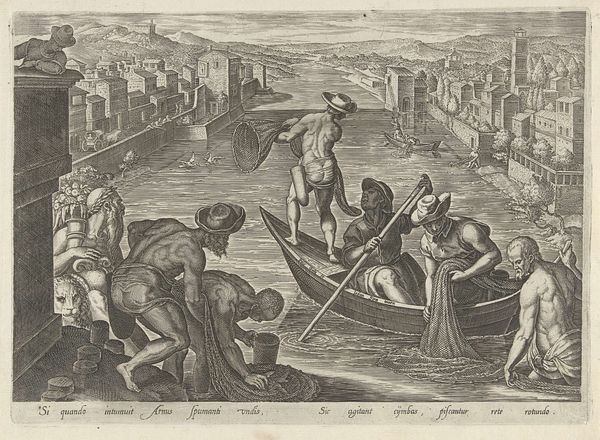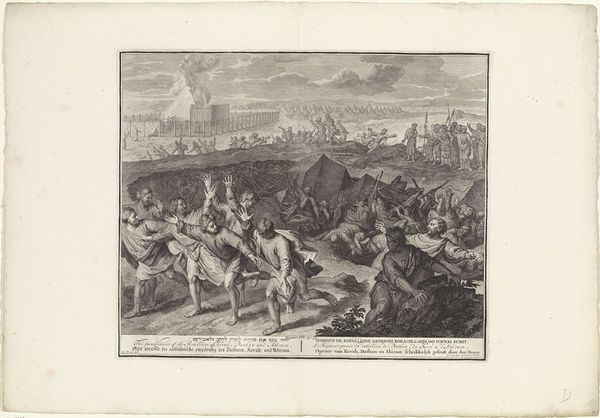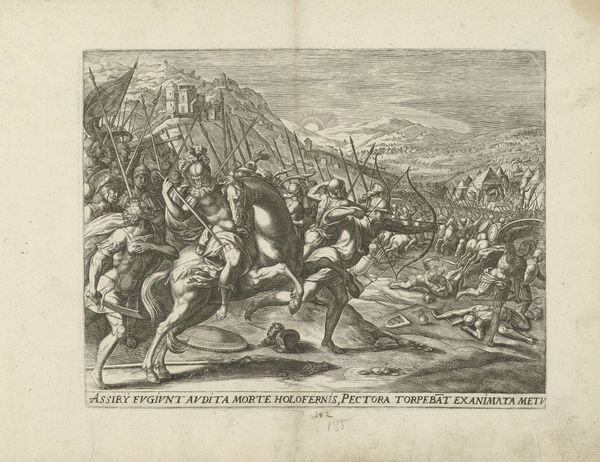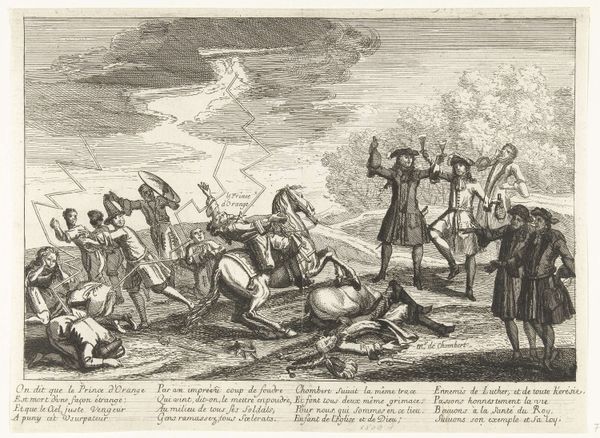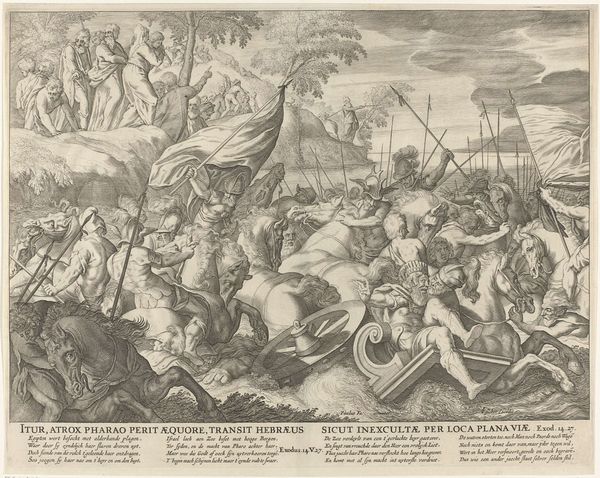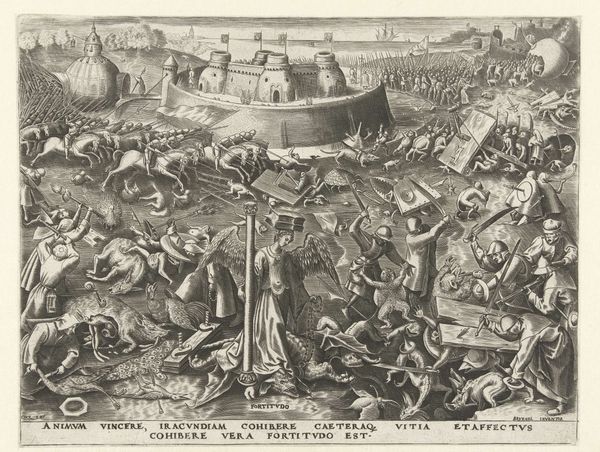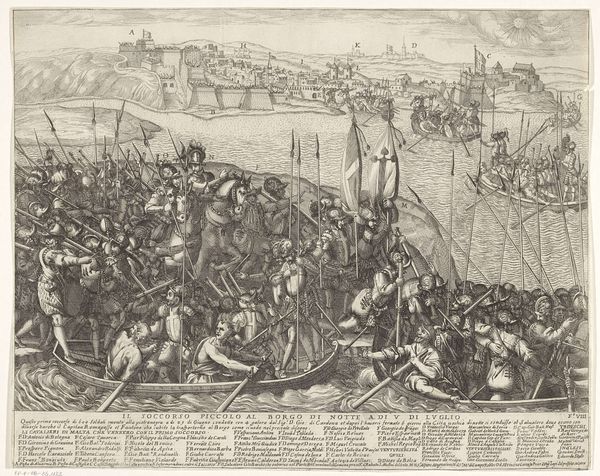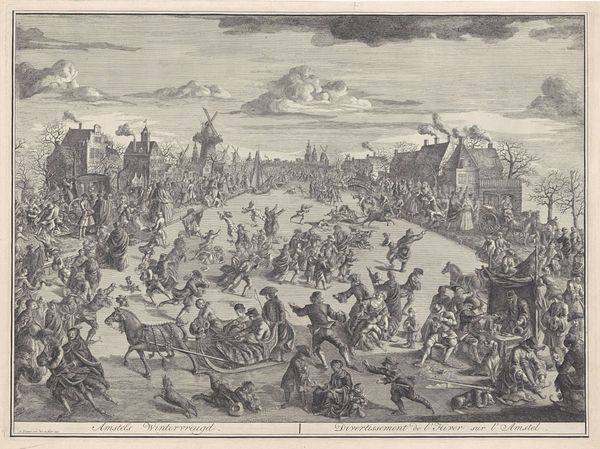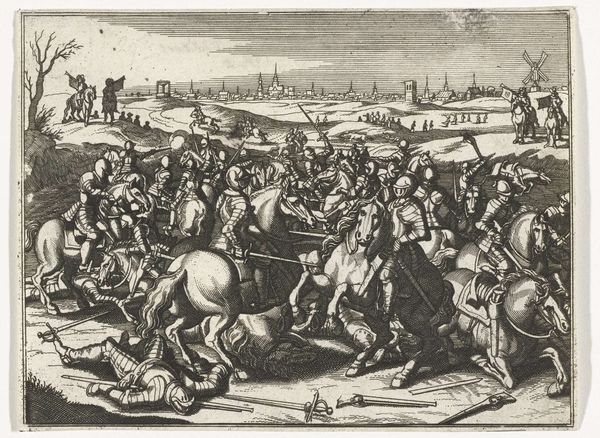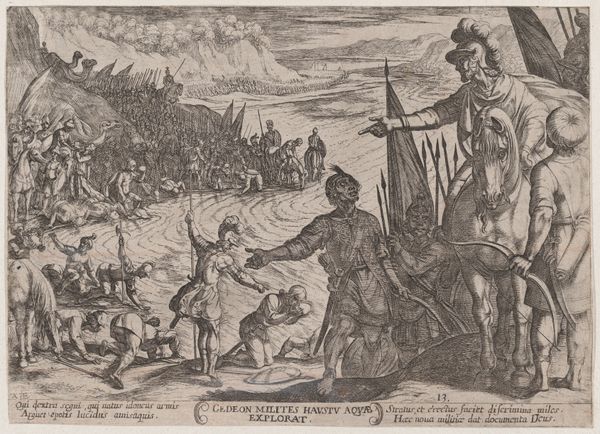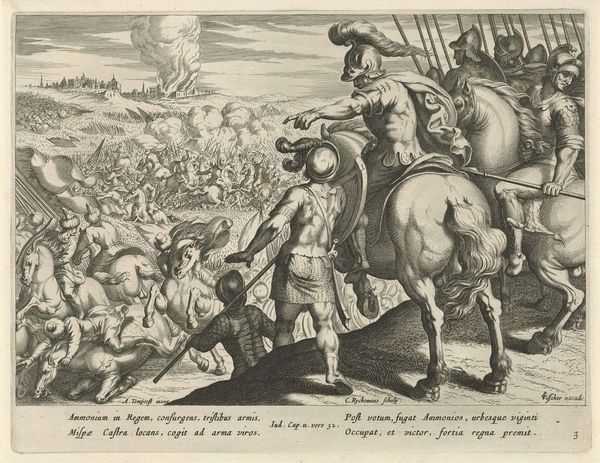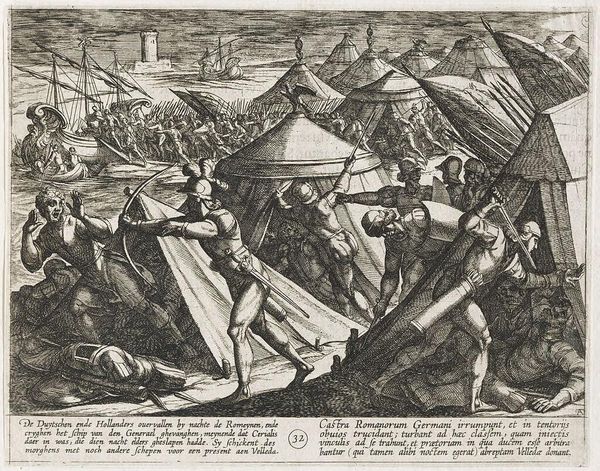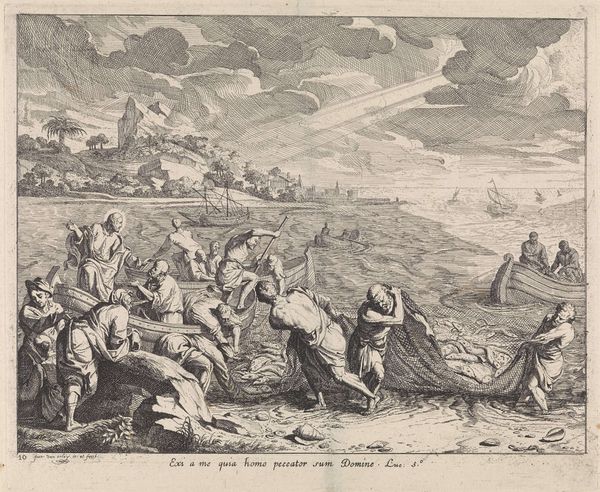
Nachtelijk overval op het legerkamp van Cerialis waarbij zijn schip wordt buitgemaakt, 69-70 1682 - 1684
0:00
0:00
print, engraving
#
narrative-art
#
baroque
# print
#
old engraving style
#
landscape
#
figuration
#
line
#
history-painting
#
engraving
Dimensions: height 220 mm, width 328 mm
Copyright: Rijks Museum: Open Domain
Joseph Mulder etched this print of the night assault on the Roman army camp by the Germanic people in the late 17th to early 18th century. Note the tent in the foreground, a symbol of shelter but here, violently ripped open, exposing vulnerability. Consider how the tent, throughout history, has represented both refuge and fragility. From nomadic tribes to military campaigns, the tent’s symbolism weaves through time, reflecting our primal need for security, yet also our awareness of its impermanence. In contrast, the plundered ship is a floating extension of land, a vessel, and a promise of a new beginning. We are drawn to images of conflict because they speak to fundamental aspects of the human psyche. The emotions stirred by battle scenes—fear, courage, and the raw instinct for survival—tap into a collective memory of ancestral struggles. These feelings resonate across generations and connect us to the continuous human drama of conflict and conquest. The image is not just a record but an awakening of dormant emotions within us.
Comments
No comments
Be the first to comment and join the conversation on the ultimate creative platform.

